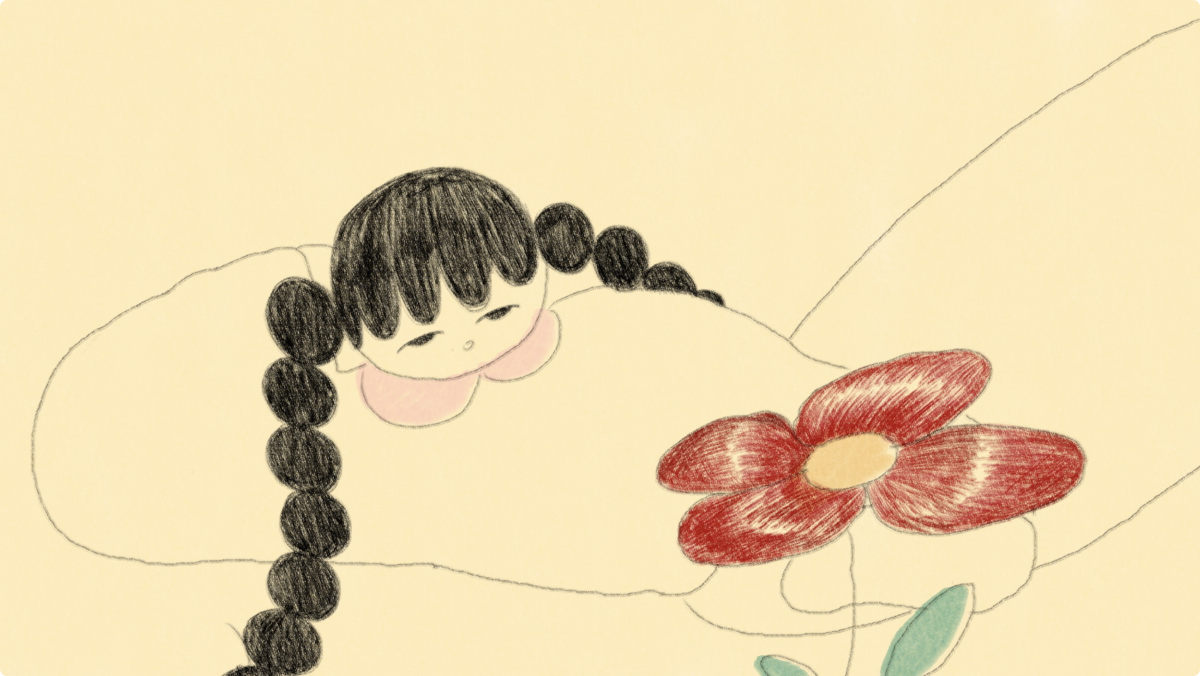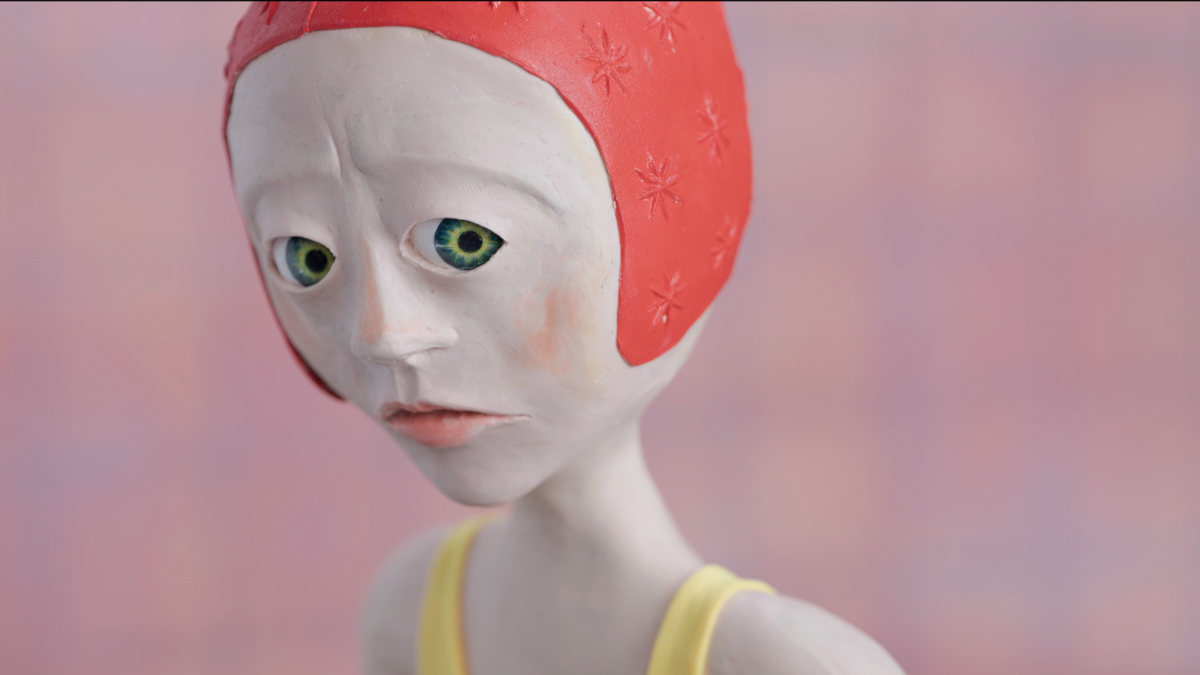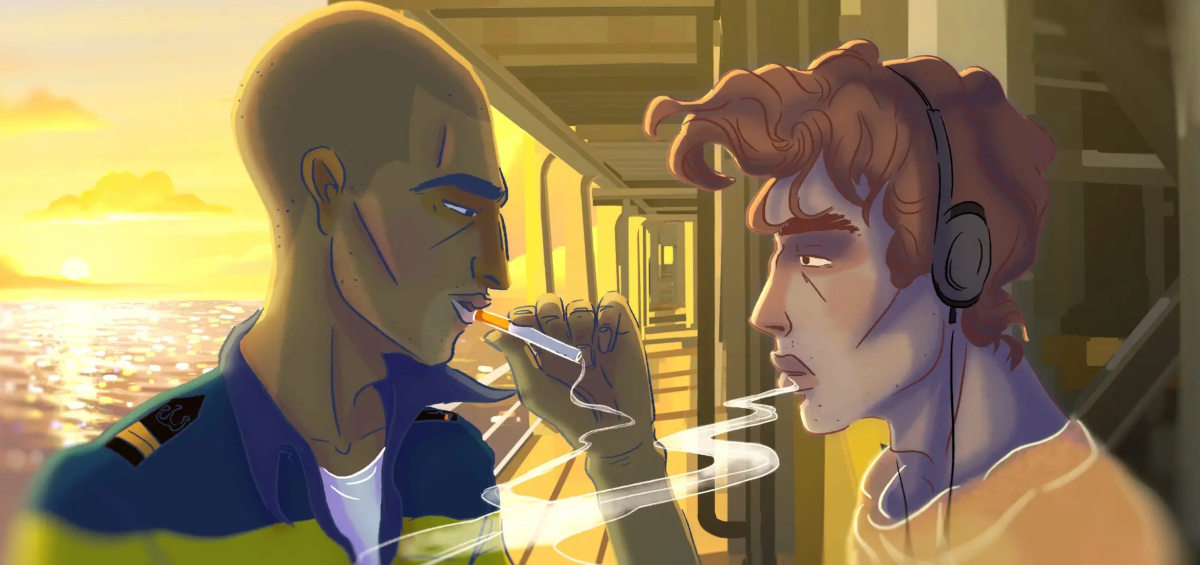Independent Animation Shorts
Waste Away by Elly Stern
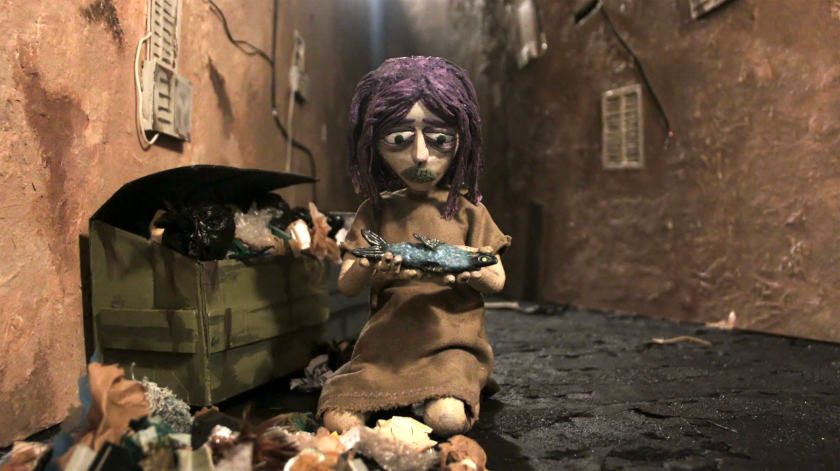
A stop-motion animation by Elly Stern, Waste Away, is making its festival round and is now online.
Waste Away is a surreal stop motion short about a homeless woman who becomes pregnant with a fish. The responsibility of motherhood gives her the strength to fight for survival, while the forces of nature threaten to overtake her - Film Synopsis
Watch Waste Away:
We had a short interview with the director for Zippy Frames.
ZF: Why a woman and a fish as your main story-point focus? Was it something you experienced (perhaps an event you witnessed) or you just made it up all along?
ES: My filmmaking process usually begins with an image that mysteriously appears in my mind. Waste Away began with an image of a homeless woman digging into her belly to reveal a live fish, swimming in her uterus. I was intrigued by the absurdity and surrealism of that initial image, which made me want to develop that idea further and turn it into a story of its own. And from there, the concept of a homeless woman pregnant with a fish began to blossom.
ZF: The woman in your film is a homeless person. Was she placed there in relation to the environmental issue already addressed in the film (a "Waste Away" character)? Would the film have worked differently if she wasn't a homeless person?
ES: I think the environmental, neglected city-scape aspect came hand in hand with the woman being homeless. My initial idea was of an alienated and isolated homeless woman, and I think only when I began to unpack that idea and explore where it fit in with my other fascinations, did the environmental themes come along. While I was developing the ideas for this film, I was thinking a lot about climate change and our neglect of the world around us: from our environment, to animals, and to our fellow humans. Always having lived in cities, I grew up observing how poorly the urban environment and those living in it are treated. And through this film, I realized that all creatures are on the same playing field; there is no hierarchy when it comes to mistreatment. The fish, the garbage covering the streets, and the woman are all disposable in the same manner — all neglected to the same degree.
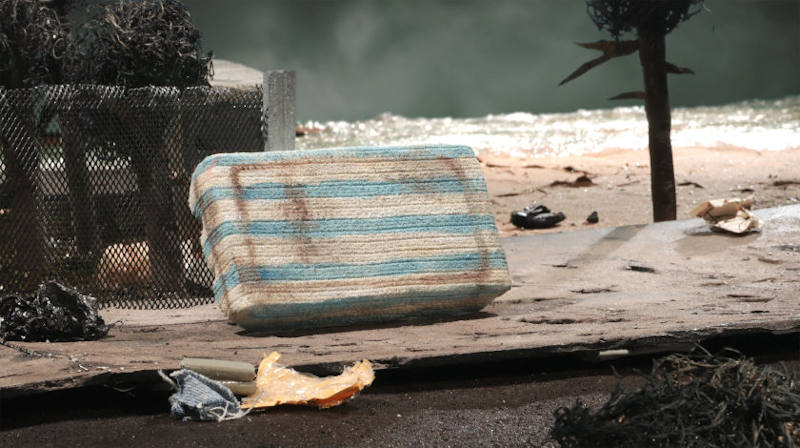
I think the film would have been very different if she wasn’t homeless. Without the isolation and desperation that she feels, she wouldn’t have gone through the steps and actions that she did — eating the fish from a pile of trash, realizing she’s pregnant and immediately running to the sea, sacrificing herself with nothing to lose. Her lack of support is what made her so resilient in the situation, able to feel compassion for a creature that she dug out of the trash and ate in desperation, and to suddenly be faced with the mission of mothering that same creature. She was already an alienated person prior to encountering the fish, and becoming a mother didn’t change that. It was just her and the fish, and there was nobody else in the world to help.
ZF: The first scene of the woman eating the fish out of the rubbish is particularly strong. Was this always in the script?
ES: The trash being dumped senselessly out the window into the alleyway where the woman lies was always in the script, and I saw the fish in the trash as an opportunity for her to find her next meal, or as a catalyst for the turning point of the story. However, I only made the decision to have the fish mysteriously placed at the very edge of the trash pile (almost as if it’s waiting to be discovered by her), once I started digging deeper into the themes and symbolism I wanted to represent. I wanted to have a couple of long moments of her inspecting the fish, getting acquainted with it before she suddenly swallows it, to catch the viewer off guard when she finally swallows it, and to give a subtle hint that maybe this fish won’t just end up being another meal for her; maybe they have a deeper connection.
ZF: What attracted you to the stop-motion and puppet animation technique here? Was it the 'reality' of the characters and the environment? And can you tell us a little bit more about the process? How did you make the puppet and the sets -people who helped you here?
ES: Since the first time I was introduced to stop motion, I completely fell in love with it and favoured it over all other animation methods. I never even considered creating Waste Away in any medium other than stop motion. However, I do believe stop motion was also the best way to bring this particular story to life. I think stop motion is a powerful method in blurring the line between realism and surrealism, similar to how CGI acts in live action. Because stop motion is a sequence of photographs of real objects, it makes everything feel so realistic and familiar, but since it’s animation and not live action, you have infinite possibilities of unrealistic and surreal situations you can bring to life.
Also, in Waste Away in particular, stop motion gave me the amazing opportunity of experimenting with materials that helped bring the environmental themes in my film to life. I made most of the props and sets in my film from found objects and garbage: the buildings out of styrofoam and wood, the bicycle out of plastic cutlery, the dumpsters out of recycled cardboard, and the water (and bodily fluids) out of plastic wrap. The alleyway set was my largest set by far, the walls measuring 32”x80”, and was made out of wood planks covered in hand-made paper, with thick sand and stucco acrylic mediums painted on for the rough texture.
The puppets were fabricated in a more traditional stop motion fabrication manner, both having wire armatures and brass tubing or ProPoxy putty bones, covered in foam and latex. The woman’s head was baked Sculpey for the top half of the skull, and plasticine for the jaw to allow her jaw to morph and widen to fit the fish inside. As Waste Away was my BFA thesis film at Massachusetts College of Art & Design, it was completely a solo project, (other than music and sound help in post-production) so I fabricated all my sets and puppets by myself. It was a rather intense 10 month journey!
ZF: The setting looks like a poor suburb of an urban environment (you have high buildings and skyscrapers in one of your shots). Did you have anything specific in mind?
ES: The city and architecture in Waste Away is inspired by Tel Aviv, where I grew up. In order to capture the essence of Tel Aviv's cityscape, my set design features rundown concrete buildings, air conditioner units outside windows, exposed wires on walls, and a sandy beach littered with garbage. However, I also included some common elements that I have observed in many other cities I have visited and lived in, such as a construction crane, shoes hanging from electric wires, a bike missing a wheel, and a cigarette receptacle. Although I wanted to capture Tel Aviv’s essence as a personal homage to my childhood, I also wanted to create a city that anyone can recognize and see themselves in, in the hope of enabling viewers to think more deeply about the waste and neglect that they may overlook in their own cities.
ZF: What were the things you were looking for when creating your sound design?
ES: For the earlier moments of city observation in the film, I was mostly looking for typical city sounds, like a car alarm, traffic, pigeons cooing, a plane passing over, or the sounds of construction. I was also intrigued by a sound phenomenon called “The Hum” that I have experienced living in cities and researched when considering sound design. It is a mysterious droning sound with an unknown cause, heard by many people in cities. I wanted to emulate the feeling of hearing The Hum in Waste Away to give the film a more ominous tone. I used a more high-pitched humming tone in the opening shot of the pair of shoes hanging on the wire, but blended with all the city sounds it’s hard to notice. In the second shot of the pair of shoes, right after the now pregnant woman runs out of the alleyway, I added a rumbling, deeper sounding hum, with less city sounds and more windy sounds in order to emulate the dreadful feeling.
Additionally, when I was researching tsunamis during pre-production, I read that sometimes you can predict an incoming tsunami if you hear a deep-sounding rumble coming from the sea, and I tried to recreate that through my sound design. The haunting musical score by my incredibly talented cousin, Daniel Hass, also definitely helped boost the intensity and dreariness of the most emotional scenes in Waste Away.
Film Review (Vassilis Kroustallis):
The air of hopelessness permeates (but will not define) the strongly articulated stop-motion short Waste Away. The shoes hanging over the power line (first shots) indicate that is a territory left to its own peculiar devices. Waste Away describes basic functions such as eating literally as being wasted away, and recycling of matter from one character to another simply multiplies material which need to be wasted.
There is something both heroic and shocking in the main female character, who finds the fish as the manna from heaven -even though it is in the pile trash. In an indifferent city (backgrounds of buildings only define distancing), the woman running toward the sea seems to be the only solution -there's no turning back. The fact that a sea made out of plastic wrap engulfs her only adds irony to the move. Waste Away is forceful without being forced, elaborate and suggestive of what happens when people get pregnant with social malaise -instead of opportunities.
CREDITS:
Waste Away
Animated & directed by Elly Stern | Musical score by Daniel Hass | Sound design by Elly Stern | Sound mix by Kyle Jones | Advising by Jake Fried | Produced at Massachusetts College of Art & Design
About Elly Stern:
Elly Stern is a mixed media animator who specializes in stop motion. She graduated with a BFA in animation from Massachusetts College of Art & Design. Elly spent her childhood in Tel Aviv, her adolescence in Toronto, and her college years in Boston, and she is currently relocating to Vancouver to work for Spotted Fawn Productions. Utilizing surrealism and a handmade approach, Elly’s animations often explore female issues and the internal body. She draws inspiration from her dreams and daydreams, and uses them to express the grittier, darker aspects of our existence and the humour that underlies this somber reality. Elly’s films have screened at film festivals internationally, and her work has been featured on multiple blogs and websites. Her BFA thesis film Waste Away (2020) is currently running its festival circuit, and won Best Animated Short at Independent Shorts Awards in July.





